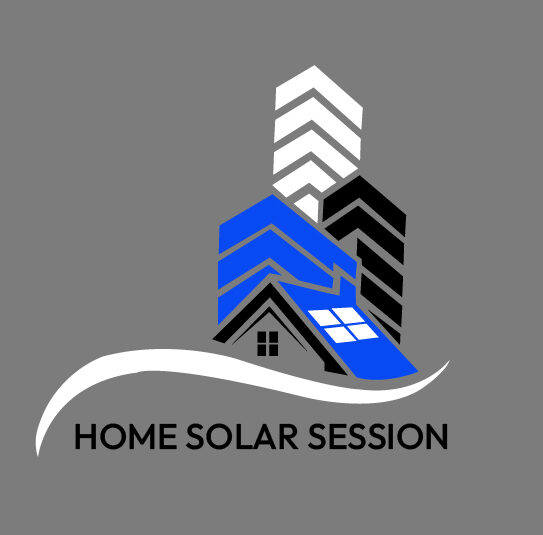Do Solar Panels Increase Property Value?
A recent study by the Lawrence Berkeley National Laboratory concludes that solar panels increase home value by $14,329 on average. Homes equipped with solar power systems sell for 3.74% more than comparable non-solar properties.
One of the strongest arguments for solar energy is that it’s an investment that pays for itself. Any upfront costs are paid back in the reduction (or elimination) of energy bills, and solar customers can reasonably expect to see a return of at least 2-3 times their initial investment over the life of the system.
But those numbers assume you live in the same house for the full duration of the warranty – which often isn’t the case. And one of the reservations holding a lot of people back switching to solar is the fear that they might not live in their house long enough for the significant up-front investment to pay off.
If you own your home, this research should assuage those fears. Outfitting your home with a grid-tied solar energy system drives up property values and offers an enticing selling point for real estate agents to market a listing.
To figure out how much you could save by going solar, check out our guide to calculating the ROI of your solar electric system in our resource center.
Even if you don’t live in your home long enough to break even on energy costs, the premium that home buyers are willing to pay to move into your solar-ready home will be more than enough to cover the investment.
Solar Homes Sell For $14,329 More On Average
The study evaluated the sale price of 22,822 homes across 6 states to determine what effect solar power systems have on home resale value. The study compares the sale price of 3,951 PV Homes (homes equipped with photovoltaic systems – a.k.a., solar-powered homes) to 18,871 Non-PV Homes.
The research finds that, on average, solar panels increase home value by $14,329 – or 3.74% more than their non-PV counterparts.
Since the average system costs $10,000-$18,000 in materials, homeowners can reasonably expect to recoup the cost of the hardware when they choose to sell their home. That’s on top of the expected savings from reduced energy bills and tax incentives, which can already pay for the system 2-3 times over the life of the warranty.
As a bonus incentive, some states don’t count PV systems toward the value of your home when calculating property taxes. Adding a $15,000 kitchen will raise your property taxes, but a $15,000 PV system might be exempt. This comes down to local regulations, though, and certainly isn’t true everywhere in the U.S.
Diminishing Returns on Larger PV Systems
One conclusion the authors of the study draw is the existence of a “green cachet” for homes equipped with PV systems. Solar-equipped homes sell at a significant premium, regardless of the wattage output of the system. The sale price of homes with more powerful PV systems did not increase proportionally to the installation cost of the system.
This suggests that homebuyers are prepared to pay more for the distinction of owning a “solar home,” regardless of the efficiency of the system, or its ability to fully cover their expected energy usage. They will pay marginally more for larger systems, but not in proportion to what the system is actually worth.
For sellers, that means it might make sense to install a modest grid tie system that relies on stored solar energy most of the year, but pulls from the electric grid during heavier usage periods, like when the A/C runs on full blast during the dog days of summer.
This may afford you the flexibility of marketing your listing as a solar home, while keeping installation costs down and turning a profit on the system when the sale goes through.
Of course, taking on an extra project like this adds time, labor costs and risk to the sale process. It may not be worth the investment, especially because…
Solar Homes May Take Longer to Sell
The study also found that, on average, solar-equipped homes take slightly longer to sell than their counterparts. Solar homes spend an extra 8 days on the market before they sell, as demonstrated by the chart below.
Note that there is quite a bit of fluctuation in the data on a state by state basis. This could be attributed to a couple factors:
- Small sample size in some states
- The data from CA is much more robust than other states in this study, which may explain why its numbers come closest to the national average.
- Incentives vary by state
- Some states offer stronger incentives for buying a solar home, while others offer nothing at all. Solar homes may languish on the market for much longer when there is no incentive for owning a solar-enabled home. For example, some states offer a break on property taxes if you own a solar home. It might be more enticing to buy a solar home in those areas.
We strongly recommend exploring our guide to State Solar Incentives if you’re in the market to understand how the dynamics might change based on your location.
Local perception of solar
Solar power has been more broadly adopted in places like CA and FL, where sunshine is plentiful and there are strong tax benefits for going solar. Other states lag behind in adoption and education on the topic.
In areas with lower electricity costs and poor benefits for solar adoption, the awareness of solar as an viable energy source tends to be quite low. Buyers may hesitate to buy a solar-powered home because they aren’t convinced the system is reliable. They also may not understand the long-term benefits, making solar homes a harder sell.
Solar education in lower adoption states can be a major stumbling block. In many cases, buyers don’t understand the difference between grid-tie and off-grid systems. They tend to assume all solar energy systems are off-grid, which rely on panels to generate 100% of their energy and run entirely on a battery storage system. The fear is that they’ll be stuck without power if the solar array goes out and they don’t know how to fix it.
In reality, most systems are grid-tied. They generate their own energy, but still hook into the public utility grid. The solar panels don’t need to generate 100% of your home’s electricity — the grid can pick up the slack in periods of heavy usage. And if the power goes out, it’s on public utility workers to fix the issue and get things back up and running as soon as possible.
In areas where solar energy is less popular, a little education may be necessary to convince buyers that a PV system is a reliable way to power their home.
Learn more about the difference between off-grid and grid tied systems with our Getting Started Guide.
Newer Systems Are Worth More
Okay, this one should be common sense – but just to be thorough, it’s worth pointing out that the data backs this up.
Newer PV systems are made from more efficient materials, have more years left on their warranty, and are less likely to be due for replacement parts (like a new inverter, which you can expect to replace about halfway through the life of a system). As PV systems age, their value depreciates, and they tend to be worth less when you put your home on the market.
Pretty simple – newer installations are a greater boon to property values, as you would reasonably expect.
Leased vs. Owned Systems
Finally, the premium only applies to homes with host-owned PV systems. If you agreed to a solar lease or PPA (Power Purchasing Agreement) with the developer who installed the system, you likely won’t see much—if any—of the higher sale price returned to you as profits. In these cases, buyers will request the previous owner pays off their lease or PPA agreement, which offsets the additional value built into the final sale price of the home.
The extra cash from the sale only goes into your pocket if you have purchased your PV system outright. That’s one of the reasons we…


ivermectin pills – buy atacand 16mg carbamazepine 200mg uk
generic accutane – brand isotretinoin 20mg purchase linezolid
buy amoxicillin medication – buy valsartan 80mg sale generic ipratropium 100 mcg
buy zithromax 250mg sale – buy tinidazole 500mg for sale nebivolol over the counter
order prednisolone 5mg generic – order generic azithromycin 250mg progesterone 200mg over the counter
buy neurontin 100mg pill – clomipramine 25mg without prescription cheap sporanox 100mg
furosemide 40mg over the counter – buy piracetam 800 mg for sale betamethasone creams
doxycycline cheap – buy generic glipizide glucotrol brand
augmentin 1000mg for sale – cymbalta 40mg pills cymbalta cheap
cost amoxiclav – augmentin 625mg us brand cymbalta
rybelsus buy online – brand vardenafil 20mg cyproheptadine 4 mg usa
zanaflex us – microzide 25 mg generic order hydrochlorothiazide without prescription
viagra sildenafil – generic viagra 100mg buy cialis 20mg for sale
order generic cialis 5mg – buy tadalafil 10mg without prescription sildenafil us
buy cenforce 100mg online – order chloroquine 250mg online order glucophage 500mg sale
lipitor 80mg without prescription – generic norvasc cost lisinopril
prilosec without prescription – buy prilosec cheap atenolol 50mg canada
buy medrol 4mg online – triamcinolone 10mg for sale brand triamcinolone
buy desloratadine tablets – dapoxetine 30mg usa generic priligy 60mg
buy cytotec – misoprostol 200mcg uk order diltiazem 180mg pills
zovirax online buy – how to get acyclovir without a prescription order generic crestor 10mg
motilium 10mg tablet – domperidone 10mg pills buy flexeril generic
buy motilium without prescription – flexeril online purchase flexeril pill
inderal 10mg pill – buy generic clopidogrel 75mg methotrexate 5mg drug
coumadin 5mg us – hyzaar usa cozaar 25mg canada
buy generic esomeprazole over the counter – oral nexium order imitrex pill
levofloxacin 500mg uk – avodart 0.5mg cost buy zantac 150mg for sale
purchase meloxicam without prescription – buy cheap mobic flomax uk
buy ondansetron 4mg sale – zocor 20mg pills zocor 10mg for sale
order valacyclovir 500mg pills – finasteride 1mg over the counter fluconazole 200mg ca
purchase provigil sale modafinil 100mg sale purchase modafinil provigil 200mg sale provigil price buy generic modafinil for sale order provigil 200mg generic